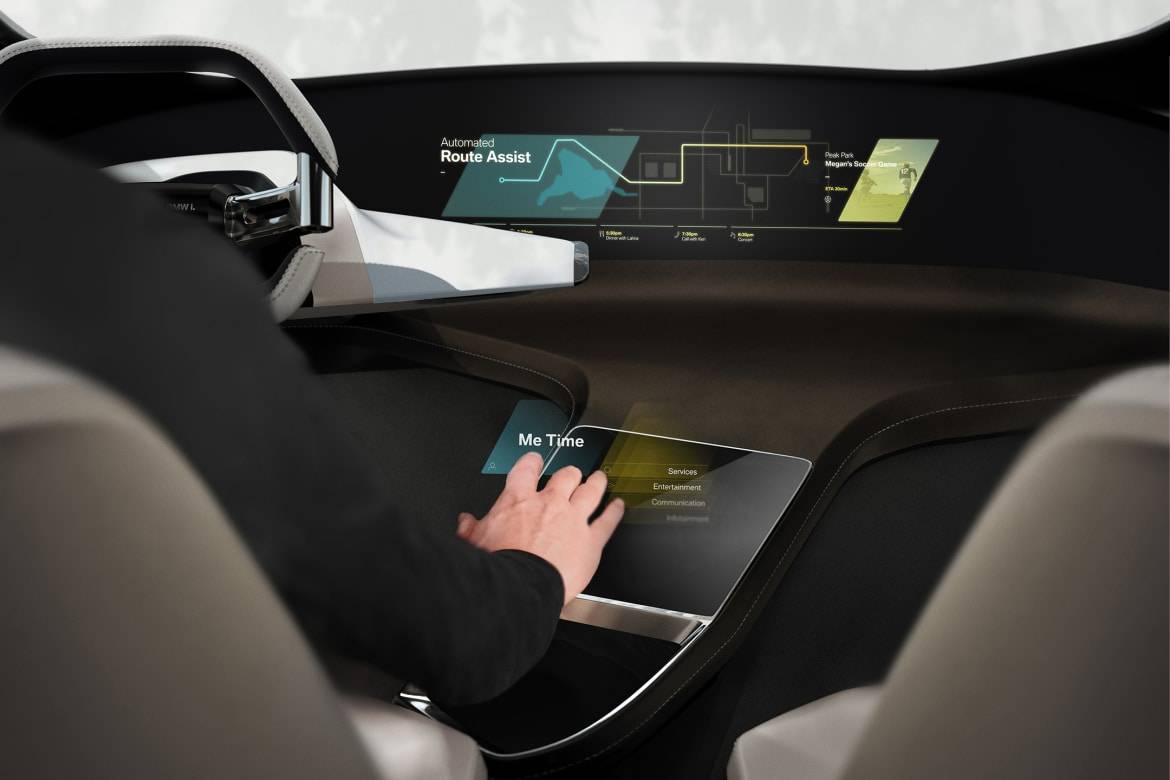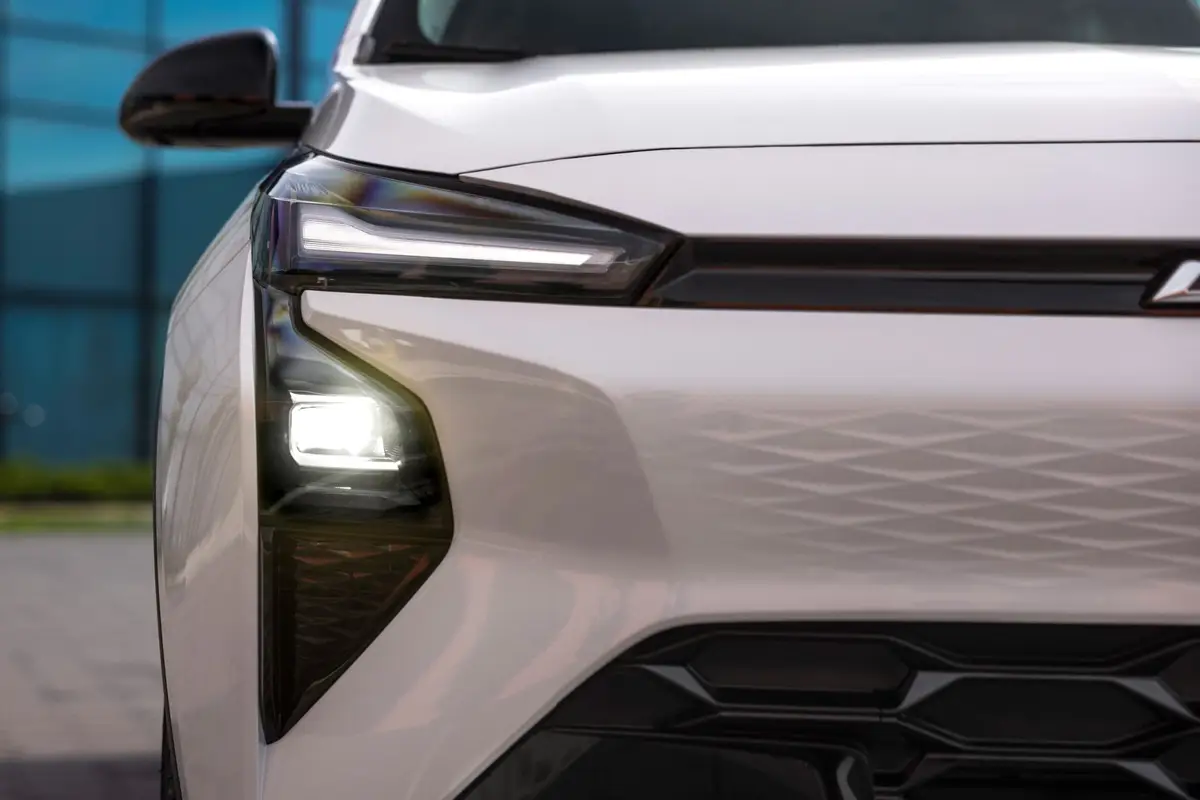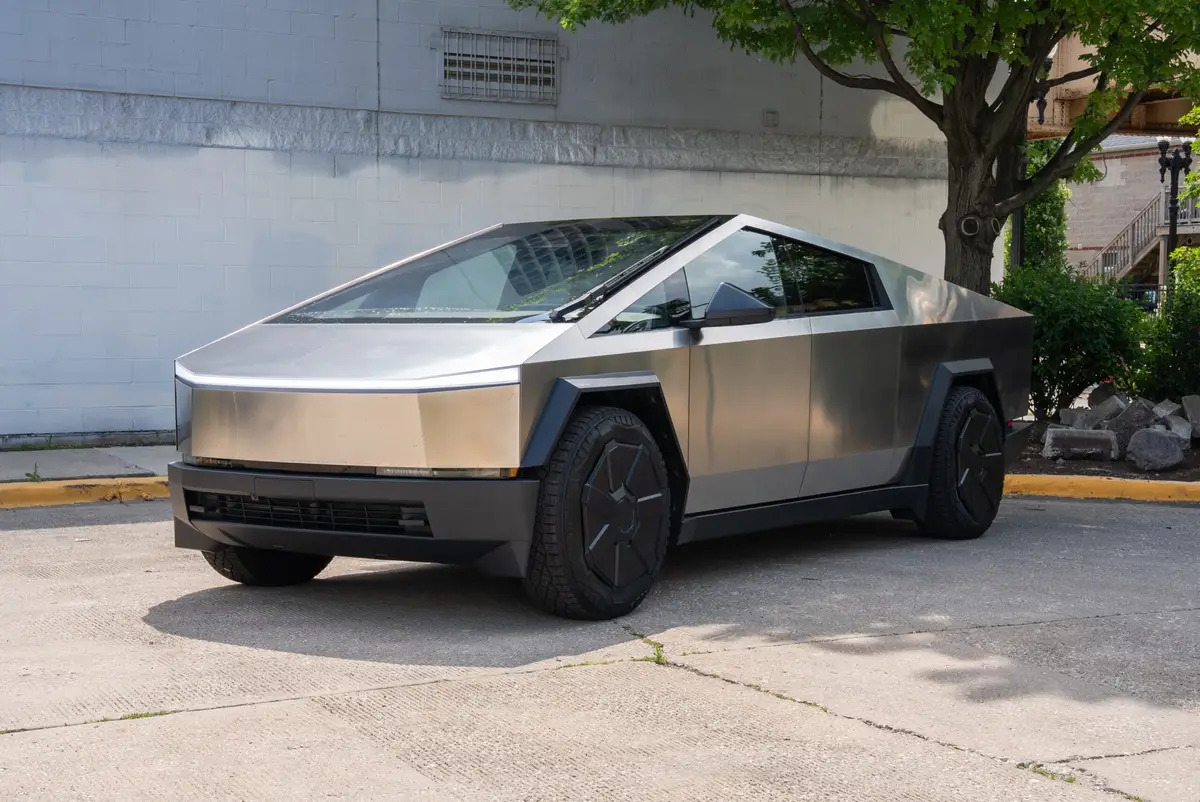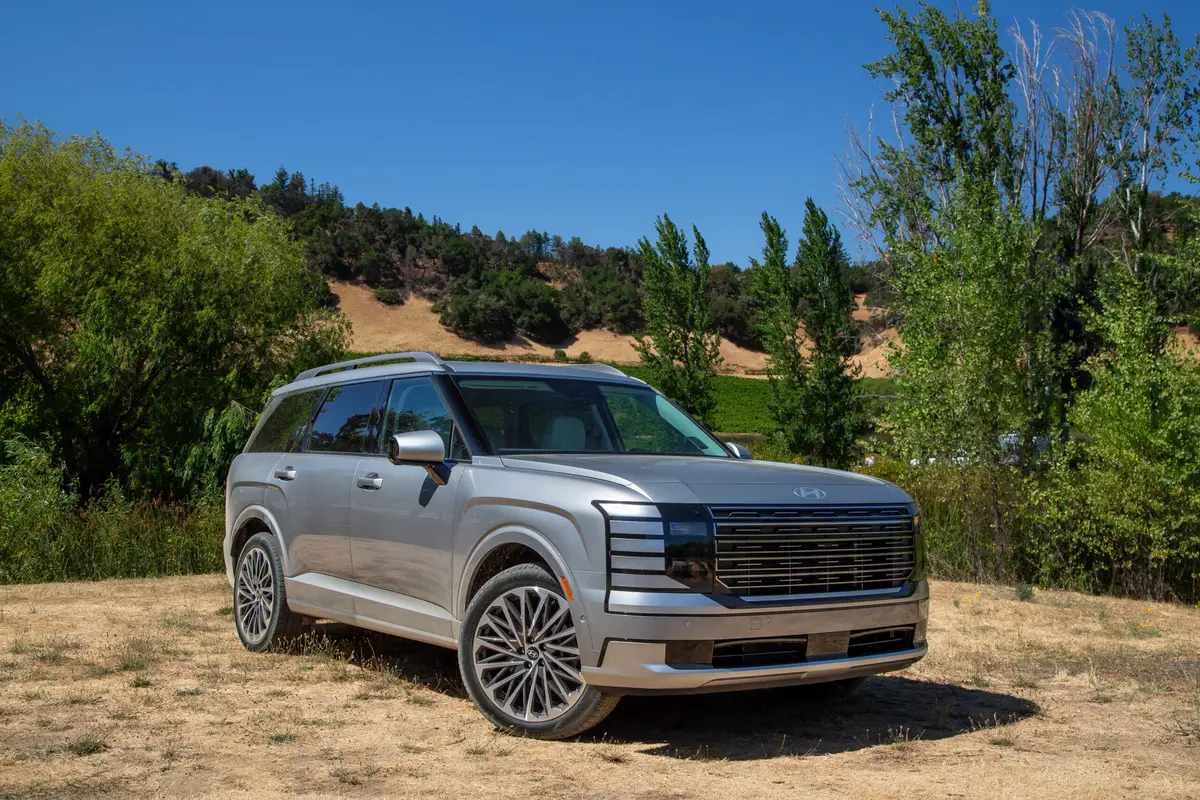BMW Goes Holographic at 2017 CES

CARS.COM — BMW is going holographic with its interiors at the 2017 Consumer Electronics Show, the major tech showcase that runs Jan. 5-8 in Las Vegas. The German automaker is using CES to introduce HoloActive Touch, a 3-D holographic display that controls navigation, ventilation settings, music and more. The system creates virtual controls, which appear to hover above the center console. If you’ve ever been in a vehicle with a head-up display unit, where information such as speed and navigation appears over the car’s hood, this is the same basic technology at its core. However, BMW has added a futuristic twist in time for CES.
Why should I care? That’s because these 3-D graphics provide tactile feedback when you touch them. That’s correct, HoloActive Touch tickles your fingertips, so to speak, with a series of pulses when you’re operating the controls. The trick is ultrasonic frequencies, which are too low for us to hear, but which provide that vital “feel” to make the HoloActive system so much more than twirling your hands and fingers in empty space.
It not only looks cool — we can’t wait to get a demo during Cars.com’s 2017 CES coverage — but it’s an excellent safety device, too. Automakers love touchscreens because they look modern and innovative, while also clearing up dashboards of countless fussy buttons and knobs. The problem is that operating a touchscreen while driving isn’t always an easy task. Imagine trying to operate an iPad at arms-length without being able to look at it and you start to get the picture.
BMW already has motion-activated controls in its higher-end products, such as the 7 Series luxury sedan. HoloActive Touch represents the next step in the company’s design and engineering of its future cabins and infotainment systems.
Honda and Google’s Waymo to Develop Self-Driving Cars
Honda and Google’s self-driving division, Waymo, are collaborating to build and develop autonomous drive cars. Google has poured millions into engineering vehicles with full self-drive capabilities, with prototypes covering billions (yes, billions!) of miles in virtual environments. Full working prototypes also have been busy data-logging in the real world, covering approximately 2 million miles since Alphabet, Google’s parent company, initiated its research into mobility solutions back in 2009.
Why should I care? This partnership with Honda comes directly after Waymo and Chrysler revealed a self-driving version of the Pacifica minivan. In the world of autonomous car development, sharing and multibrand partnerships appear to be the way forward. Honda hasn’t revealed many details of this arrangement, or set a firm timetable as to what we should expect from it. The Japanese automaker has previously stated it intends to introduce self-drive vehicle tech sometime within the next three to four years, however.
Honda is also bringing a full suite of mobility concepts to the 2017 CES, including “safe swarm technology” — sounds a little scary, we admit — along with vehicles that have the capability to talk to each other and learn from their driving experiences.
Chrysler EV to Debut at CES
Chrysler might get an icy reception in the Motor City once the 2017 North American International Auto Show opens its doors to the world’s media in Detroit Jan. 9. That’s because the American auto giant has opted to reveal a new electric-powered vehicle at CES rather than its more traditional stomping ground in Michigan.
The vehicle, which many expect will be based on the Pacifica, is also likely to introduce further details concerning Chrysler’s ongoing cooperation with Waymo, Google’s newly renamed self-driving vehicle division.
Why should I care? If you love cars and have a penchant for poker, Las Vegas is quickly becoming an automotive hub thanks to CES. The tech-focused show has become a fixture of the auto show calendar, despite the fact its roots are in microchips and terabytes, not pistons and horsepower. Nearly every major automobile company — along with a vast range of car suppliers — are exhibiting at CES, with many (Chrysler included) saving their biggest newsmakers for Nevada, rather than the Detroit auto show held the following week.
Uber Pulls Self-Drive Prototypes From California
Uber has decided a few thousand bucks spent on permits isn’t worth the hassle. The San Francisco-based ride-hailing company has pulled a fleet of self-driving taxis from the streets of its hometown, all because California’s Department of Motor Vehicles insisted the vehicles need a special permit that costs all of $150. Considering how much money Uber has spent on autonomous drive projects throughout the U.S., it seems unfathomable why this would prove a major hurdle.
Why should I care? Privacy is the reason, and Uber is in no mood to go public with every nuance — or mishap -— related to its autonomous-driving research. Those California permits would have obliged Uber to release all information related to any miscues or accidents with its self-driving taxi fleet. Other tech firms and automakers all follow identical rules.
Uber is holding its ground and arguing that its vehicles have a human onboard and behind the wheel, in case manual intervention is needed to cope with tricky traffic situations. The same man-and-machine interface has been used with Uber’s self-drive taxis in Pittsburgh — a market, incidentally, where Uber has successfully skirted the need for any permits that would force it to report any incidents or accidents.
Featured stories


2025 Tesla Cybertruck Review: Wedge Issues


2026 Hyundai Palisade Review: Growing Gains

